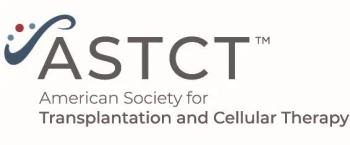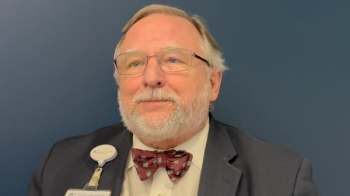
FDA Removes REMS, Lessens Requirements of Liso-Cel/Ide-Cel in Blood Cancers
The FDA had reduced driving and geographic restrictions to 2 weeks for patients with lymphomas and multiple myeloma receiving liso-cel and ide-cel.
The FDA has approved label updates for lisocabtagene maraleucel (liso-cel; Breyanzi) in large B cell lymphoma (LBCL) and other lymphomas and idecabtagene vicleucel (ide-cel; Abecma) in multiple myeloma to reduce certain patient monitoring requirements and remove the risk evaluation and mitigation strategy (REMS) programs that were put in place since the products’ initial approval, according to a press release from the developer, Bristol Myers Squibb.1
For both agents, driving restrictions were reduced from 8 weeks to 2 weeks after treatment and the requirement to stay within proximity of a health care facility following infusion was reduced from 4 weeks to 2 weeks.
It was noted that despite the potential of cell therapy, approximately 2 in 10 eligible patients receive it due to complex logistical and geographic barriers affecting both patients and providers.
The REMS requirement was also removed because the FDA deemed the established management guidelines and extensive experience of the medical hematology/oncology community sufficient to diagnose and manage the risks of adverse effects (AEs) without the need for a REMS for CD19- and BCMA-directed autologous chimeric antigen receptor (CAR) T-cell therapies.
“CAR T-cell therapy is a transformational, potentially lifesaving option for patients living with blood cancers, and we are working to challenge current practices, assumptions, and barriers that limit access,” stated Lynelle B. Hoch, president of cell therapy organization at Bristol Myers Squibb, in the press release.1 “Today's FDA-approved label updates reinforce [Bristol Myers Squibb’s] continued efforts to collaborate across the health care ecosystem, with the ultimate goal of reaching more patients and democratizing access to cell therapy.”
A retrospective analysis shared at the
In clinical trials, any-grade CRS and NEs occurred in 54% and 31% of patients and grade 3 or higher events occurred in 3% and 10%; in the Center for International Blood & Marrow Transplant Research (CIBMTR) registry, any-grade CRS and ICANS occurred in 49% and 27% and grade 3 or higher events occurred in 3% and 10%.
In clinical trials, CRS and NEs that were 15 days or less after infusion occurred in 98% and 88% and onset more than 15 days after infusion occurred in 2% and 12%, with 100% and 89% of those respective cases resolved. In the CIBMTR registry, CRS and ICANS onset 15 days or less after infusion occurred in 97% and 95% and onset more than 15 days after infusion occurred in 3% and 5%, with 87% and 62.5% of those respective cases resolved.
The median time from infusion to resolution, in clinical trials, was 9 days (range, 2-78) for CRS and 17 days (range, 2-151) with NEs; in the CIBMTR registry, it was 7 days (range, 1-555) for CRS and 12 days (range, 2-104) for ICANS.
In the LBCL cohort of the phase 1 TRANSCEND-NHL-001 trial (NCT02631044), 46% of patients had CRS, with a median time to first onset of CRS of 5 days (range, 1-15); 35% of patients had NEs, with a median time to first onset of 8 days (range, 1-46).
Liso-cel was evaluated and approved based on results from the phase 3 TRANSFORM trial (NCT03575351).3 Results showed that event-free survival was significantly longer with liso-cel vs standard second-line therapy (HR, 0.34; 95% CI, 0.22-0.52; P < .0001). In the approval, it was noted that the agent was approved with REMS due to the risk of fatal or life-threatening CRS and NEs. CRS occurred in 45% of patients, and NEs occurred in 27% of patients.
Ide-cel was evaluated and approved based on results from the phase 2 KarMMa trial (NCT03361748).3 The overall response rate with ide-cel was 72% (95% CI, 62%-81%), with a complete response rate of 28% (95% CI, 19%-38%). It was also noted in the approval that ide-cel was approved with a REMS that required the health care facilities that dispensed the therapy to be specially certified to recognize and manage CRS and NEs.
"Living with blood cancer is challenging, but patients and their loved ones still need to maintain jobs, take care of families, and plan for the future,” added Sally Werner, CEO of the Cancer Support Community, in the press release.1 “Today’s announcement reduces some of the most onerous requirements that may have previously discouraged patients, particularly those who live far from a treatment center, from seeking the potentially transformational effects of cell therapy.”
References
- U.S. Food and Drug Administration approves streamlined patient monitoring requirements and removal of REMS programs within Bristol Myers Squibb’s cell therapy labels. News release. Bristol Myers Squibb. June 26, 2025. Accessed June 27, 2025. https://tinyurl.com/rwfn8m7x
- Kamdar M, Shadman M, Ahmed S, et al. Optimizing post–chimeric antigen receptor (CAR) T cell monitoring: evidence across lisocabtagene maraleucel (liso-cel) pivotal clinical trials and real-world experience. J Clin Oncol. 2025;43(suppl 16):7026. doi:10.1200/JCO.2025.43.16_suppl.7026
- FDA approves lisocabtagene maraleucel for second-line treatment of large B-cell lymphoma. FDA. June 27, 2022. Accessed June 27, 2025. https://tinyurl.com/4wechw97
- FDA approves idecabtagene vicleucel for multiple myeloma. FDA. March 29, 2021. Accessed June 27, 2025. https://tinyurl.com/yc6c5454
Newsletter
Stay up to date on recent advances in the multidisciplinary approach to cancer.





















































































